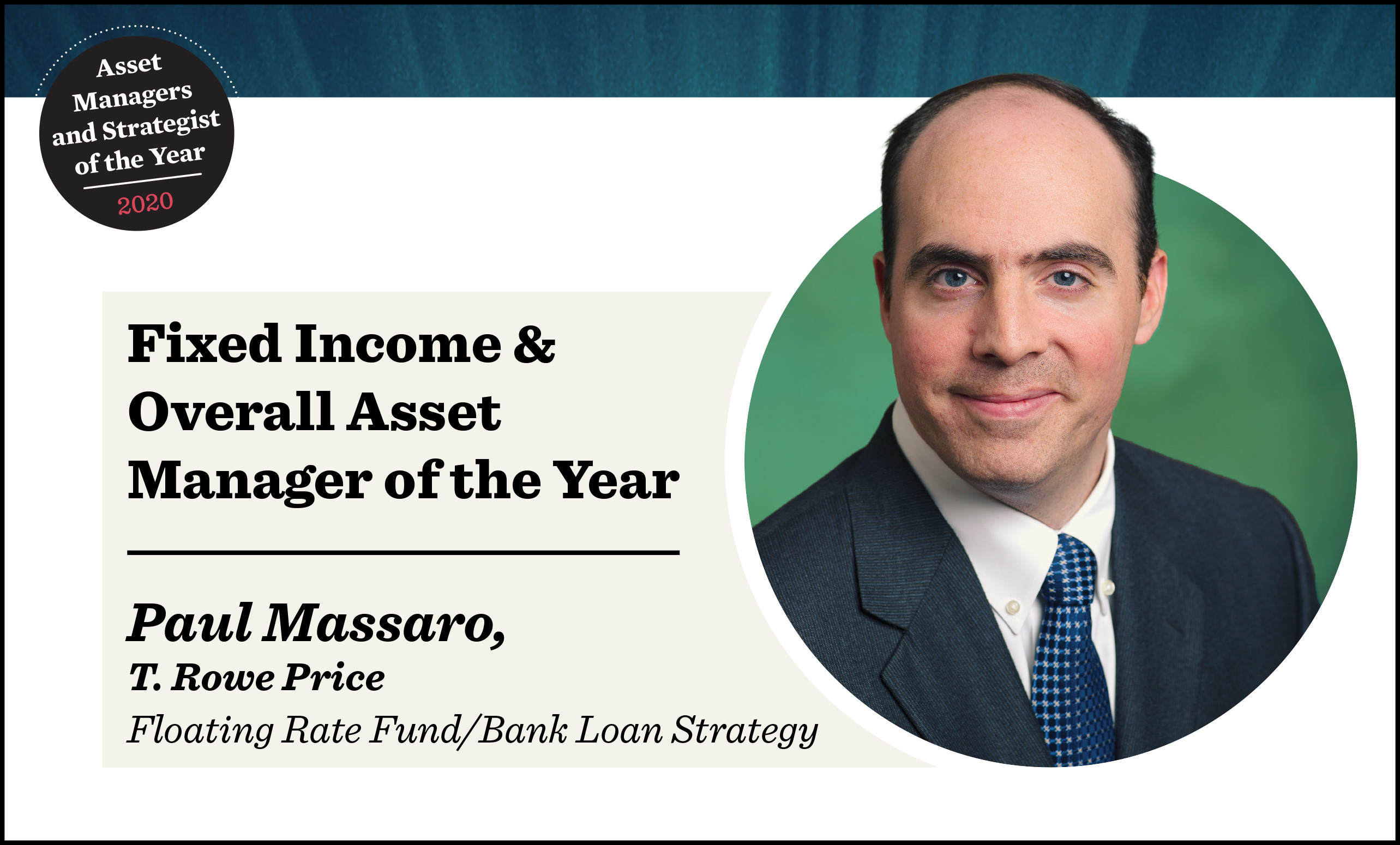Often in tough times, the best portfolio managers show their worth, as Paul Massaro, lead portfolio manager of the $2 billion T. Rowe Price Bank Loan Strategy and the firm's Institutional Floating Rate Fund, has demonstrated.
Massaro says avoiding credit pitfalls in individual securities and sectors, like energy, was an essential factor in last year's stellar outperformance. The healthcare sector was subject to "regulatory noise and the opioid crisis," he points out, adding that "our analysis kept us out of those names."
The fund's heavy holdings in Asurion, a cell phone insurance provider, and Kronos, a workforce management company, also helped the portfolio's performance and are further proof of the fund's strong team of analysts, according to Massaro.
Fifteen dedicated analysts covering high yield bonds and the bank loan market support T. Rowe's Floating Rate Fund and its bank loan strategy, along with a five-person trading trading team, another portfolio manager and one portfolio specialist. "We have one research team for high yield and loans," Massaro said.
"Collaboration is a big theme," and it goes even beyond the bank loan and high yield teams. "We can tap into the collective insights from our firm's equity franchise," he added.
The team's analysts are focused on protecting capital on the downside and avoiding credit risk. Its members study leverage ratios, free cash flows as a percentage of total debt, loan-to-value ratios and the strategic value of companies and the quality of their management.
This bottom-up approach to the market can provide "great risk-adjusted returns over time" but consists of assets that are "callable at par, which caps their appreciation," Massaro said. Still, the bank loan market can deliver "very attractive returns if you enter at the right point."
The fund emphasizes diversification — favoring higher quality issues like B- and BB-rate. It holds over 200 names, with about 15-20 issues accounting for roughly 30% of the portfolio. Along with adjustable-rate loans, it includes some fixed-rate bonds like Treasuries and investment-grade corporates. Its Sharpe ratio, 2.41, is higher than that of its benchmark index, the S&P/LSTA Performing Loan Index.
The fund's flexible, risk-reduction approach helped it weather outflows in the bank loan market in 2019 and during the pandemic-fueled March 2020. The U.S. economy should recover, and that means rising rates eventually — which would be good news for the bank loan market, though not for most other fixed-income sectors.
"There will certainly be differentiation in the market. Some sector and names [will be] very challenged," Massaro said. Pandemic-impacted sectors like insurance brokerages are under the microscope, along with software firms that have held up well thanks to their recurring revenue from subscriptions, he adds. — Bernice Napach





